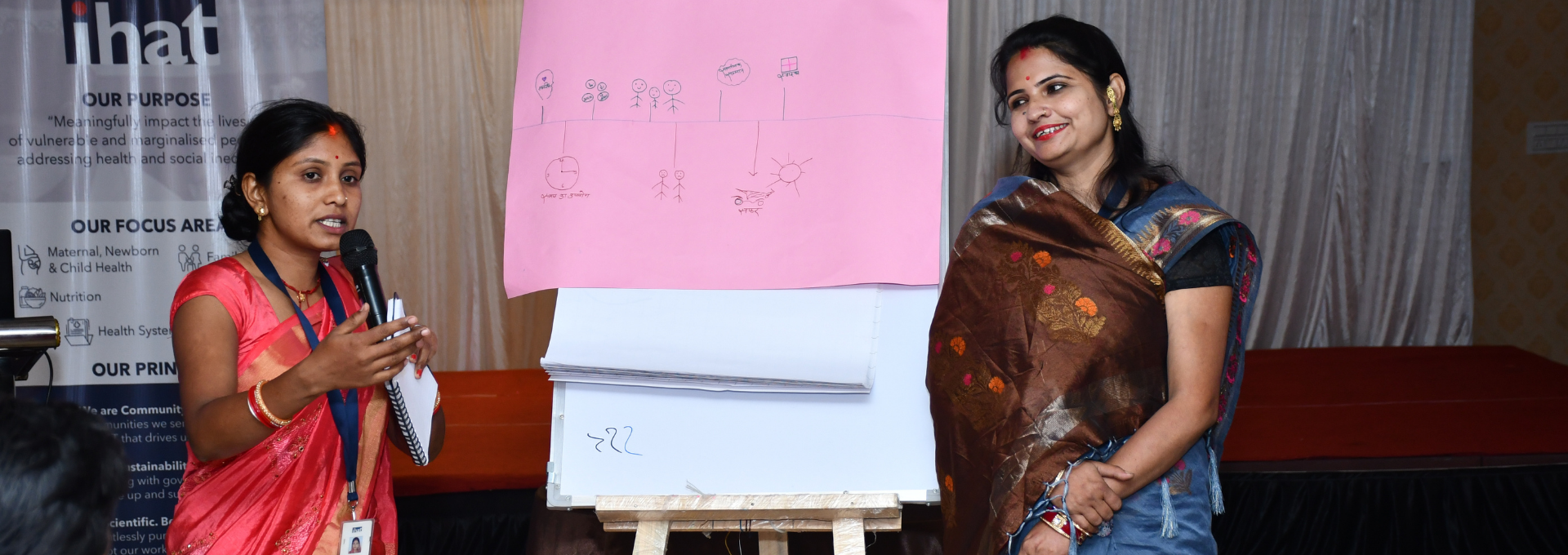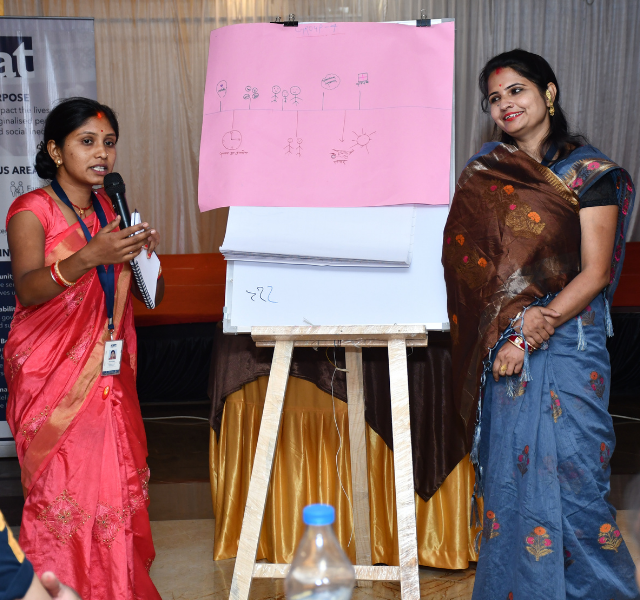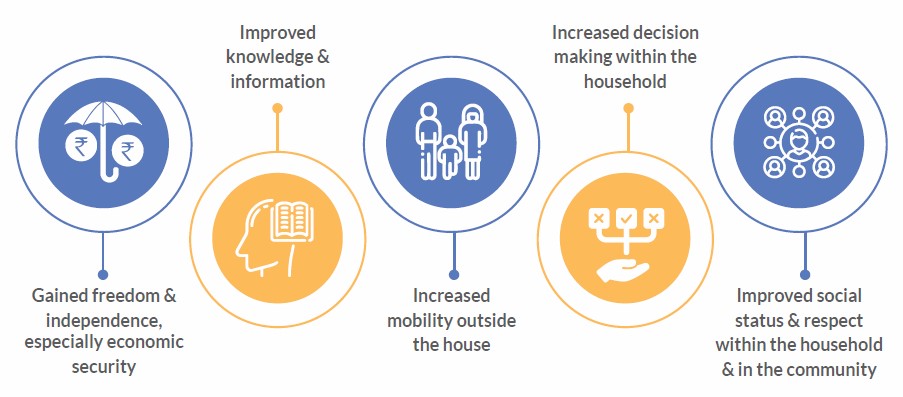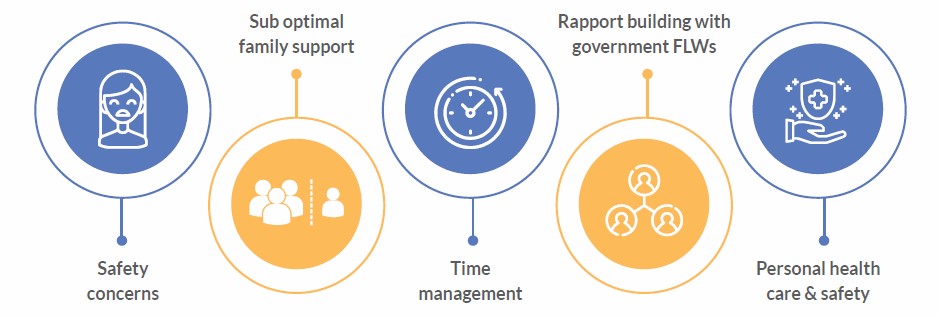

Since 2021, India Health Action Trust (IHAT) has been implementing Project MANCH to improve maternal, newborn and child health (MNCH) outcomes in tribal areas of Madhya Pradesh. The project, supported by HCL Foundation, focuses on Shahdol district in Madhya Pradesh.
IHAT works in close coordination with the Government of Madhya Pradesh (GoMP) & the Institute for Global Public Health, University of Manitoba (IGPH-UM), to assess gaps in effective coverage & to develop interventions that address these gaps at the community, facility & health systems level. The project aims to increase the availability, quality and utilisation of critical MNCH services across the continuum of care in the tribal areas.
Project MANCH, supported by HCL Foundation, aims to improve the MNCH outcomes in tribal areas of Madhya Pradesh. One of the key drivers of the Project are the ASHA Supervisor Mentors (ASMs) who provide need-based supportive supervision & mentoring to ASHA Supervisors & ASHAs.
A participatory exercise was conducted on day two of the review meeting with ASMs and NMs to understand the personal gains and challenges that the project frontline mentors experienced with the project. A participatory tool called Force Field Analysis was used to facilitate these discussions. This tool explores the ‘supporting’ and ‘resisting’ factors that enable change. The tool is useful since it helps participants see the positive and negative sides of the situation and identify core issues that prevent them from reaching their goals. The session was facilitated to allow the project frontline mentors to reflect on their personal life and understand what they perceived as supporting factors or resisting factors concerning working on the project.
30 ASMs and two NMs who participated, were randomly divided into six groups during the session. The facilitation took place in Hindi. The facilitator explained the purpose of the activity as well as the difference between ‘supporting’ factors/ gains and ‘resisting’ factors/challenges using examples. The mentors were provided with a large paper and encouraged to draw the force field as a vertical line and label the space on the left as ‘supporting factors’/ gains and the space on the right as ‘resisting factors’/ challenges. The ASMs and NMs were then encouraged to reflect on their personal life and discuss the gains and challenges that they observed. Using examples from their lives, each mentor drew or wrote each gain or challenge on a sheet of paper. At the end of the activity, groups presented their work, following which there were discussions to address the challenges flagged by the group members.
The group shared their personal gains and challenges.
Personal Gains

Personal Challenges

The facilitator noted all these factors during the session. And in the subsequent group work, through the sharing and discussion of gains and challenges, solutions to some of these issues were explored.
The participants discussed the challenges to understand what could be changed to better the gains received through the project. The following solutions were proposed at the meeting: